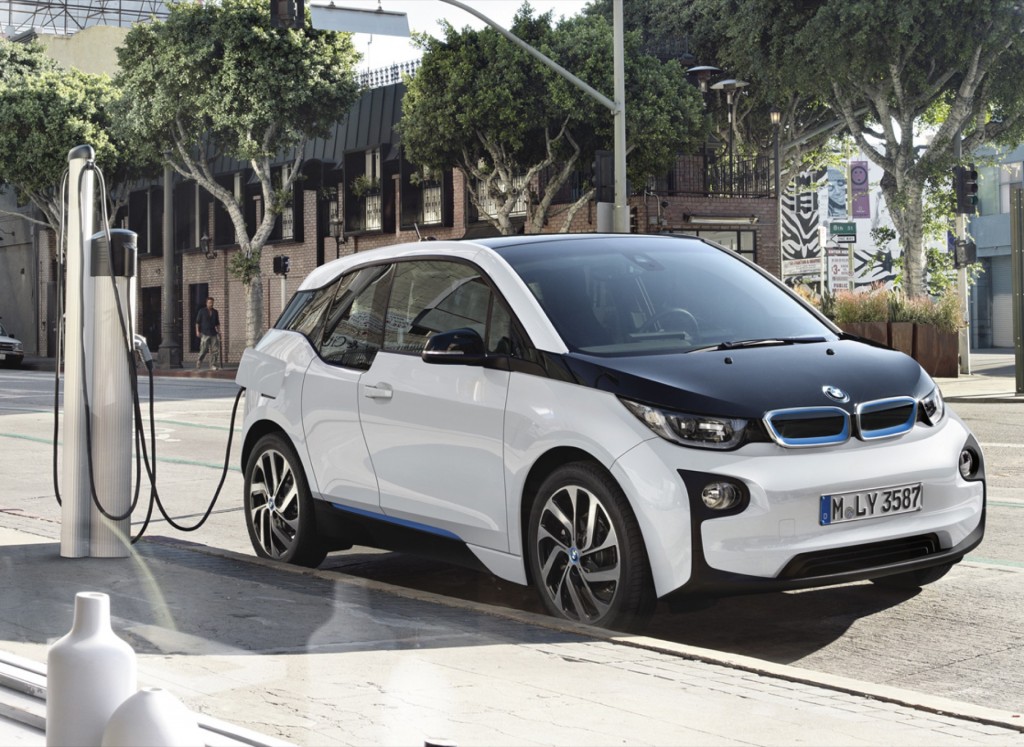With BMW having decided to offer not only plug-in hybrids across its range but also fully electric versions of its core models, its 'i' sub-brand is in a curious position.
Is there a future for the high-tech vehicles designed for maximum efficiency when battery-electric powertrains are rolling into conventional cars as well?
The answer to that question may not be clear for a while, but the BMW 'i' brand has long been known to have at least one more vehicle coming in its lineup.
DON'T MISS: BMW i5 electric crossover SUV in 2019: latest rumor-mill roundup
That would be the BMW i5, likely to go into production in 2018 for the 2019 model year.
And now it's been rendered by our friends at Indian Autos Blog, based on BMW's own patent drawings uncovered by AutoGuide and published three weeks ago.
Published information and inside sources indicate that the BMW i5, assuming it appears as anticipated, will be an all-electric five-door crossover SUV with seats for five and an EPA-rated range of 200 to 250 miles.
![Rendering of BMW i5 electric crossover utility vehicle patent drawings [uncovered by AutoGuide] Rendering of BMW i5 electric crossover utility vehicle patent drawings [uncovered by AutoGuide]](https://images.hgmsites.net/lrg/rendering-of-bmw-i5-electric-crossover-utility-vehicle-patent-drawings-uncovered-by-autoguide_100578595_l.jpg)
Rendering of BMW i5 electric crossover utility vehicle patent drawings [uncovered by AutoGuide]
It's likely to sit on the footprint of a compact or C-segment car, though a large battery pack under the floor may give it the interior volume of a mid-size vehicle, one class up.
The i5 will be built using the same aluminum frame and carbon-fiber-reinforced plastic (CFRP) body shell as the i3 and i8.
To underscore its SUV credentials, especially in those markets where cold weather means snow, all-wheel drive will be offered as an option—unlike the Chevrolet Bolt EV.
The BMW 'i' sub-brand, originally conceived in the mid- and late 2000s as the "MegaCity Project," was intended to look at what kinds of vehicles would be needed in an increasingly dense and urbanized 21st-century world.
Its first two cars, released in 2013 and 2014, were the BMW i3 and i8, both using an aluminum rolling chassis with a carbon-fiber reinforced plastic body shell sitting on top.

2017 BMW i3
The i3 was a battery-electric hatchback—with a range of 81 miles from its 22-kilowatt-hour battery pack—while the sexy $140,000 BMW i8 was a plug-in hybrid sport coupe, complete with bird-wing doors.
For 2017, the BMW i3 received a larger 33-kwh battery that boosted its range to an EPA-rated 114 miles.
Its range-extended i3 REx version for 2017 gets a rated range of 97 miles, up from the previous 72 miles.
CHECK OUT: BMW will electrify its regular cars; what happens to 'i' models?
But the i3 lost its claim to be the most energy-efficient car sold in the U.S. with the arrival of the 2017 Toyota Prius Prime plug-in hybrid, with a conventional steel body and its 25 miles of rated range.
While the two cars only compete among a subset of buyers, the i3's expensive technology may not necessarily be required for efficiency in future decades as battery capacity increases and cell prices fall at a faster rate than projected a decade ago.
Meanwhile, the arrival of a new generation of low-profile, high-capacity Samsung cells is expected to give the BMW i5 its range of 200 miles or more—but not for another two years.
_______________________________________













